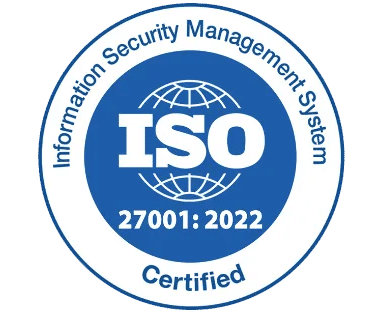How IT Asset Inventory Helps Drive Digital Transformation

Companies in every industry are starting their digital transformation journey. Digital transformation means bringing digital tech into all parts of a business, from how they help customers to how they work inside.
It’s key to boosting productivity, making customers happier, and helping businesses adapt faster. One big part of successful digital transformation that often gets missed is keeping track of IT assets.
IT asset inventory software is a detailed, current list of all a company’s tech stuff—hardware, software, and other tech resources. While this might seem like just basic organizing, good IT asset inventory management software can have a big impact on the success of digital transformation.
While this might seem like just basic organizing, good IT asset inventory management software can have a big impact on how well digital transformation goes.
Let’s figure out how keeping track of IT assets plays a key role in pushing digital change forward and check out the smart benefits it brings to the table.
Importance of Digital Transformation
Before we dive into IT asset software, let’s take a step back and look at the bigger picture—digital transformation. It’s not just about adopting the latest tech; it’s about reshaping how businesses operate to stay competitive in a digital-first world.
Today, technologies like cloud computing, artificial intelligence, machine learning, and the Internet of Things (IoT) are revolutionizing industries. But digital transformation isn’t just a technology upgrade—it’s a cultural shift. Companies need to embrace continuous change, encourage collaboration, and base decisions on real-time data.
However, navigating digital transformation comes with its challenges:
- Legacy Systems – Many businesses still rely on outdated technology that doesn’t integrate well with modern digital tools.
- Data Silos – Information trapped in isolated systems makes it difficult to share insights across teams.
- Scalability Issues – Digital solutions must grow alongside the organization to keep up with evolving needs.
Overcoming these challenges requires more than just investing in new technologies—it demands a structured approach to managing existing assets and resources that support future growth.
The Role of IT Asset Inventory Software in Digital Transformation
A well-maintained IT asset inventory management software gives businesses a clear view of their technology landscape. Without this visibility, organizations can struggle with inefficiencies, security vulnerabilities, and a lack of direction in their digital transformation efforts.
Here’s how IT asset management plays a key role in making digital transformation a success:
Streamlining Digital Transformation with Data-Driven Insight
One of the biggest advantages of using IT asset management software is the ability to make informed, data-driven decisions.
With an accurate inventory of IT assets, companies can easily plan for upgrades or replacements. For example, analyzing hardware and software usage data helps IT teams identify outdated or underutilized technology that might be slowing down digital transformation. Legacy servers or incompatible software can create bottlenecks, while a detailed IT asset inventory helps businesses decide what needs to be upgraded, replaced, or phased out.
By tracking asset lifecycles, organizations can also anticipate equipment end-of-life, preventing unexpected downtime and costly last-minute replacements. This ensures that technology investments align with long-term digital transformation goals
Optimizing Resource Allocation
Digital transformation requires investment in new technologies, training, and infrastructure—but that doesn’t mean companies should overspend.
A well-managed IT asset inventory management helps businesses avoid unnecessary costs by making the most of their existing resources. Understanding what hardware and software are already available prevents redundant purchases and ensures new investments complement the current tech stack.
This is particularly valuable for scaling. As businesses grow, their infrastructure must expand without excessive costs. With IT asset software, companies can identify underutilized resources and repurpose them efficiently, making growth more sustainable.
Enhancing Security and Compliance
Security and compliance are major concerns when adopting new digital technologies. Every new system—whether cloud-based services, IoT devices, or enterprise applications—introduces potential vulnerabilities.
IT asset inventory software provides an up-to-date record of all hardware and software components, ensuring businesses maintain security asset management and regulatory compliance throughout their digital transformation.
For example, asset management tools can:
- Track software licenses and warranties to avoid compliance risks.
- Ensure all devices and applications receive necessary security patches and updates.
- Identify and mitigate security threats before they become major issues.
Without this level of oversight, businesses risk compliance violations, data breaches, and unnecessary fines.
Ensuring Scalability and Flexibility
Digital transformation isn’t just about today’s needs—it’s about preparing for future growth. Businesses must ensure their IT infrastructure can scale with their evolving demands.
An IT asset inventory management provides insights into the capacity of servers, network equipment, and software, enabling companies to make strategic decisions about expanding resources when necessary. Whether increasing cloud storage or upgrading physical infrastructure, data from asset management software ensures investments are made in the right areas at the right time.
Additionally, visibility into IT assets allows businesses to quickly adapt to changing needs by reallocating resources rather than making unnecessary purchases—helping companies remain agile in a fast-paced digital landscape.
Supporting Collaboration Across Departments
In many organizations, IT, finance, and business operations function as separate silos. However, digital transformation requires greater collaboration across departments.
A centralized IT asset management system serves as a single source of truth, allowing teams to work together more effectively.
For example:
- Finance teams can use asset inventory data to manage budgets, track depreciation, and plan for future investments.
- IT departments can ensure resources are allocated efficiently and remain secure.
- Business units can verify that the necessary tools for their digital initiatives are readily available.
By fostering collaboration, IT asset management enhances efficiency and alignment across the organization.
Best Practices for Implementing IT Asset Management in Digital Transformation
To fully leverage IT asset management in digital transformation, businesses should follow these best practices:
1. Centralize Asset Data
Managing IT assets on scattered spreadsheets isn’t sustainable. A centralized IT asset inventory system ensures real-time visibility into hardware, software, and infrastructure, making it easier to track resources and plan upgrades.
2. Automate Asset Tracking
Regularly assessing asset performance helps identify inefficiencies and ensure optimal utilization. For instance, consistently underperforming devices may indicate a need for upgrades, software patches, or replacements.
3. Monitor and Optimize Asset Performance
Regularly assessing asset performance helps identify inefficiencies and ensure optimal utilization. For instance, consistently underperforming devices may indicate a need for upgrades, software patches, or replacements.
4. Review and Refresh Your Asset Inventory Regularly
Digital transformation is an ongoing journey, not a one-time initiative. Keeping IT asset inventories up to date ensures businesses remain aligned with the latest technologies and trends, adapting quickly to new opportunities and challenges.
Conclusion
As businesses integrate more digital solutions, IT asset management becomes a critical pillar of success. A well-maintained IT asset inventory system streamlines digital transformation, optimizes resource allocation, enhances security, and ensures scalability.
By implementing best practices in asset management, companies can maximize the value of their existing resources, reduce risks, and make strategic technology investments that drive long-term growth.
Managing IT assets isn’t just about tracking hardware and software—it’s about building a solid foundation for a smarter, more agile digital future. As companies embrace digital transformation, Asset Management 365 will be the key to ensuring a seamless, secure, and cost-effective transition.
Frequently Asked Questions
1. What is included in IT assets?
IT assets encompass all hardware, software, and digital resources that support an organization’s IT operations. These include:
- Hardware – Computers, servers, networking equipment, mobile devices, peripherals (printers, scanners, etc.).
- Software – Operating systems, enterprise applications (ERP, CRM), cloud services, and security tools.
- Networking Equipment – Routers, firewalls, modems, switches.
- Cloud & Virtual Assets – Cloud storage, SaaS applications, virtual desktops.
- Data & Databases – Customer records, financial data, internal documents.
- Security Assets – Encryption tools, identity management systems, security monitoring software.
2. What is an information asset inventory?
An information asset inventory is a structured catalog of an organization’s digital resources, helping businesses track, manage, and secure critical data. It includes:
- Data Assets – Customer information, financial records, intellectual property.
- IT Systems & Software – Applications, databases, cloud platforms.
- Hardware & Infrastructure – Servers, storage devices, network equipment.
- Compliance & Security – Regulatory requirements, security policies, risk assessments.
- Lifecycle Information – Asset acquisition, maintenance, and retirement details.
Keeping an up-to-date information asset inventory is essential for cybersecurity, compliance, and successful digital transformation.
3. Why Is IT Asset Inventory Management Important?
IT asset inventory management plays a critical role in ensuring organizations maintain control over their hardware, software, and digital resources. Without a proper system in place, businesses risk inefficiencies, security vulnerabilities, and financial losses. Below are the key reasons why IT asset inventory management is essential:
1. Enhances Operational Efficiency
A well-maintained IT asset inventory provides real-time visibility into available resources, reducing downtime and optimizing asset allocation. It ensures that IT teams can quickly locate, repair, or replace assets without delays.
2. Reduces Costs and Prevents Unnecessary Purchases
By keeping track of all IT assets, organizations can avoid duplicate purchases and ensure proper utilization of existing resources. This prevents overspending on hardware and software licenses while also reducing maintenance costs.
3. Ensures Compliance with Licensing and Regulations
Many industries must comply with software licensing agreements and regulatory requirements such as GDPR, HIPAA, and SOX. An up-to-date asset inventory helps businesses stay compliant by monitoring software usage, ensuring proper licensing, and preventing legal penalties.
4. Strengthens Cybersecurity and Risk Management
Outdated or untracked IT assets can become security vulnerabilities. IT asset inventory management helps identify unauthorized or obsolete devices, ensuring timely updates, patching, and secure decommissioning of old systems to mitigate cyber threats.
5. Supports Digital Transformation Initiatives
As businesses migrate to cloud computing, AI, and automation, a comprehensive IT asset inventory helps decision-makers assess their current infrastructure and plan upgrades effectively. This ensures that digital transformation efforts are built on a strong IT foundation.
6. Improves IT Asset Lifecycle Management
From procurement to retirement, IT assets go through multiple stages. Proper asset tracking ensures organizations can:
- Schedule preventive maintenance
- Optimize depreciation costs
- Plan upgrades or replacements efficiently
7. Enhances IT Support and Troubleshooting
IT helpdesk teams benefit from an accurate asset inventory by quickly identifying device configurations, software versions, and past maintenance records. This speeds up issue resolution and minimizes downtime.
IT asset inventory management is no longer optional—it’s a necessity. By maintaining an accurate, real-time inventory of IT assets, businesses can cut costs, improve security, ensure compliance, and drive digital transformation.










_svxLrd-8yH.png)

_2VYSFUTN5m.png)

_JiluXJRGNl.svg)

_2djTKNocf.png)





_Rapo0hRMBy.png)










